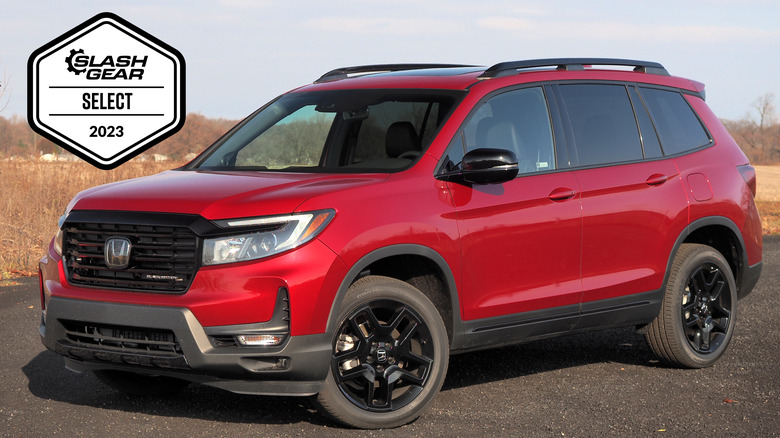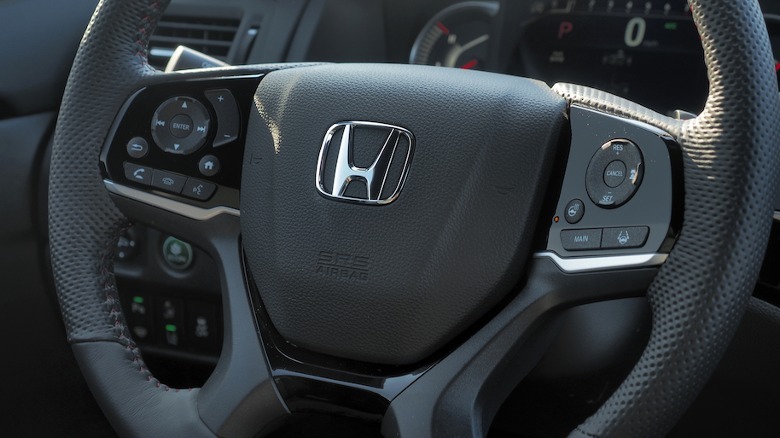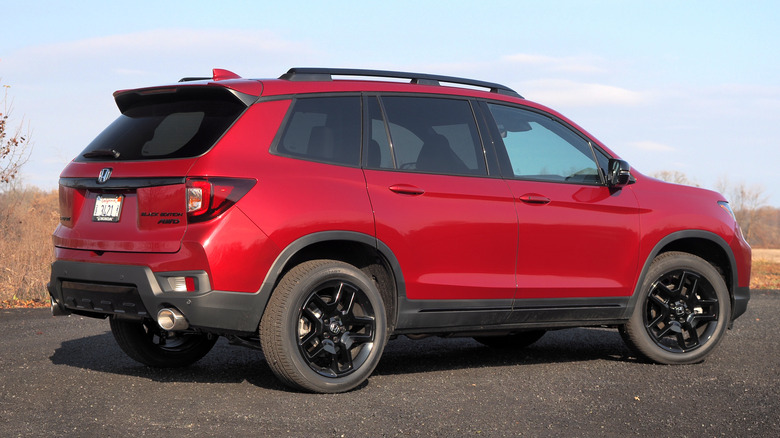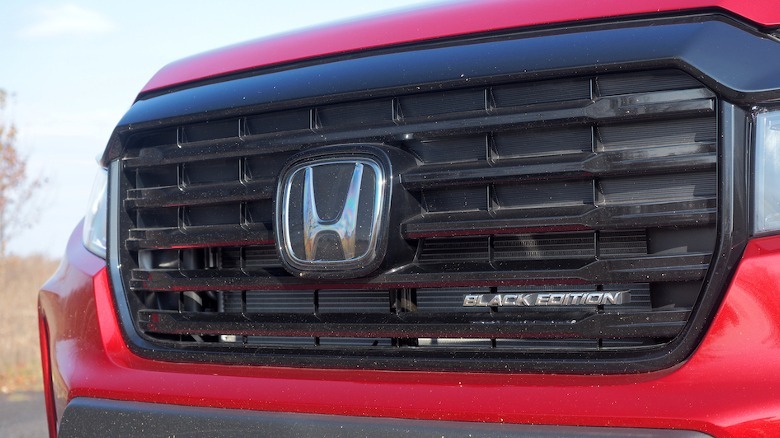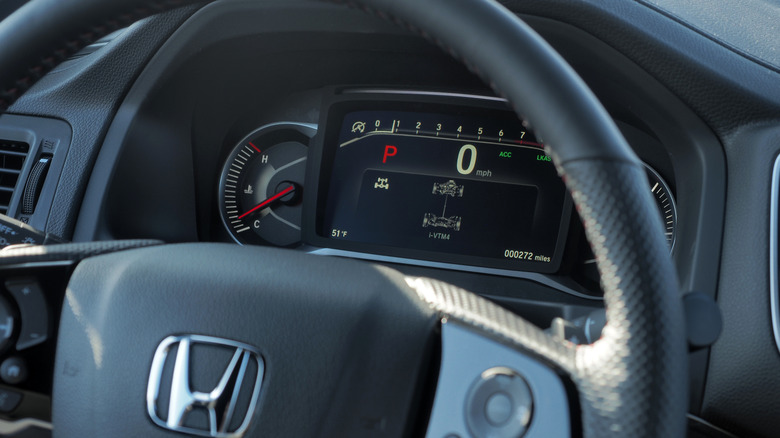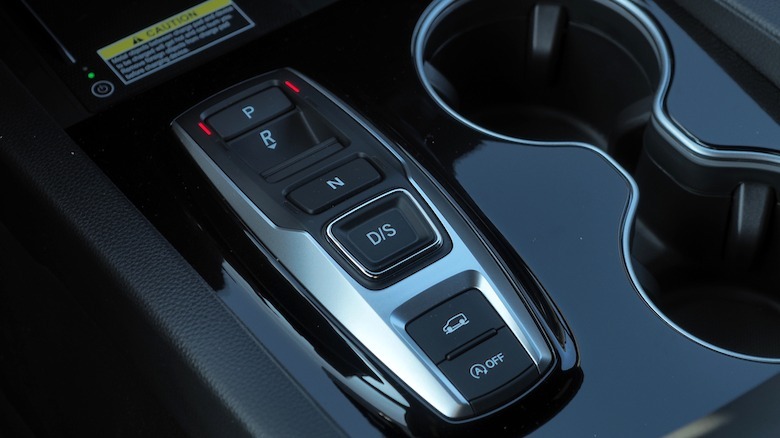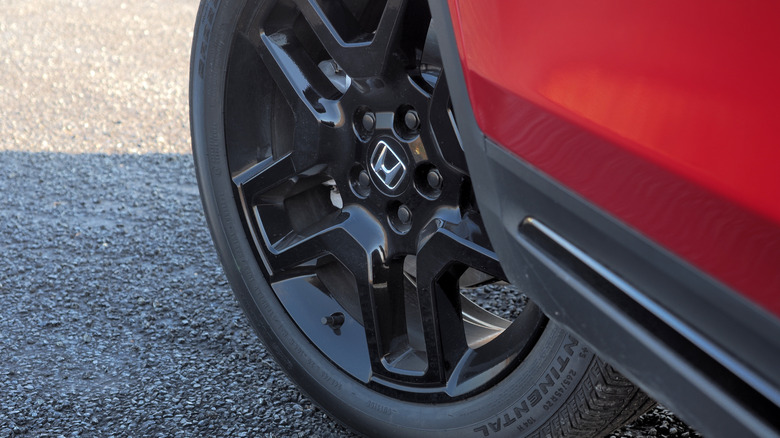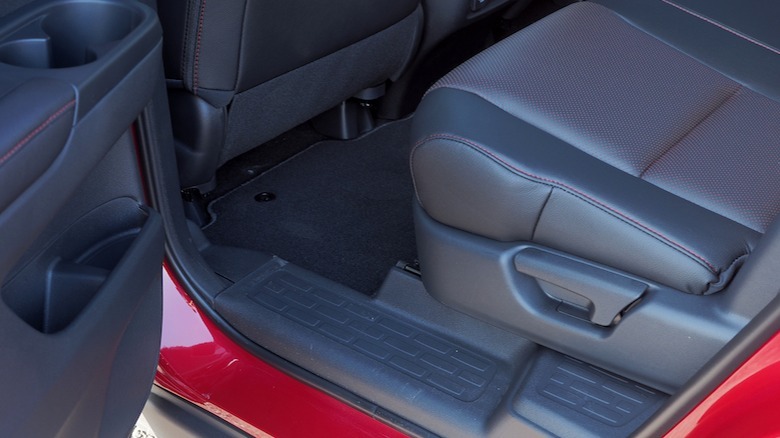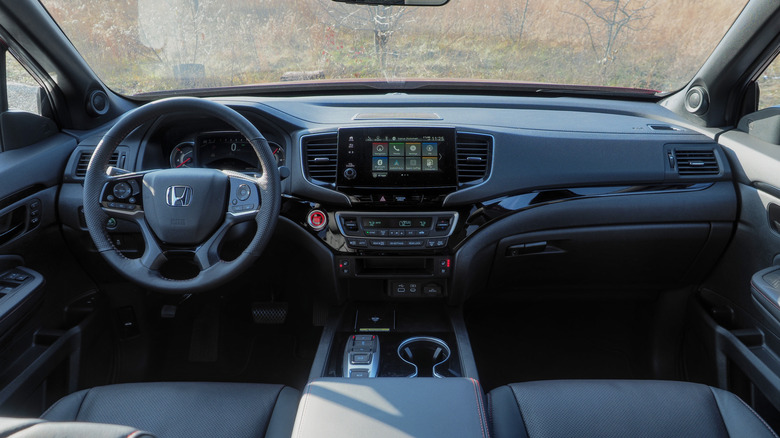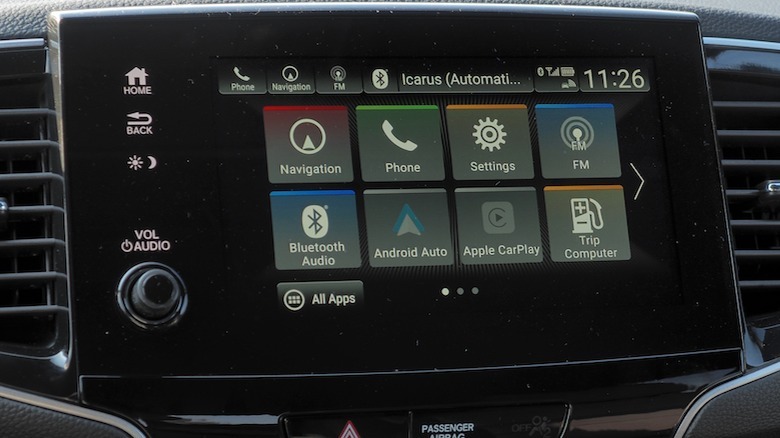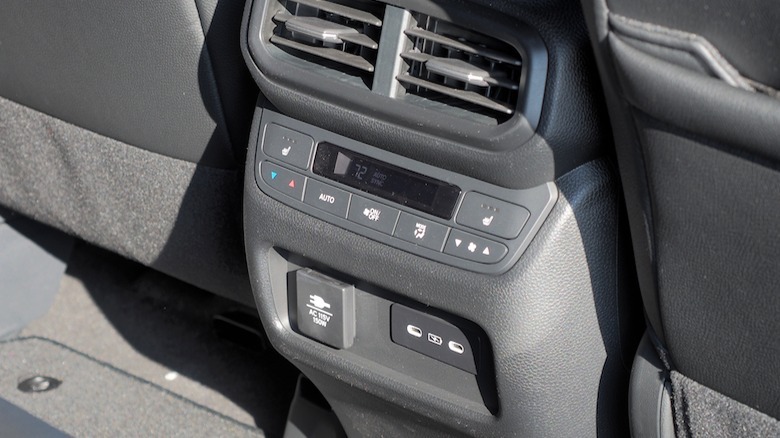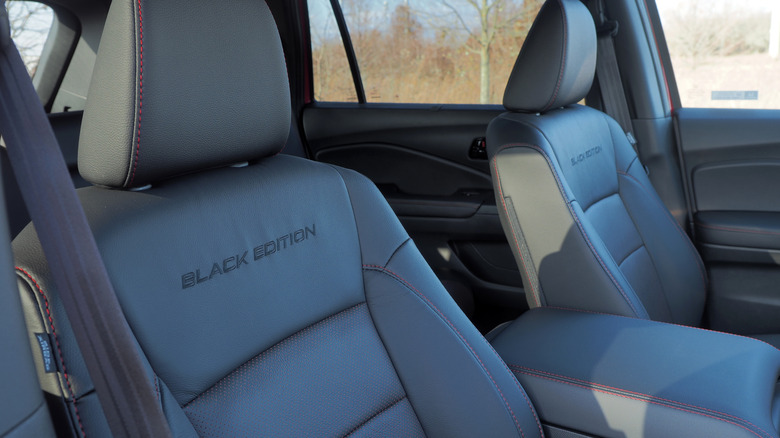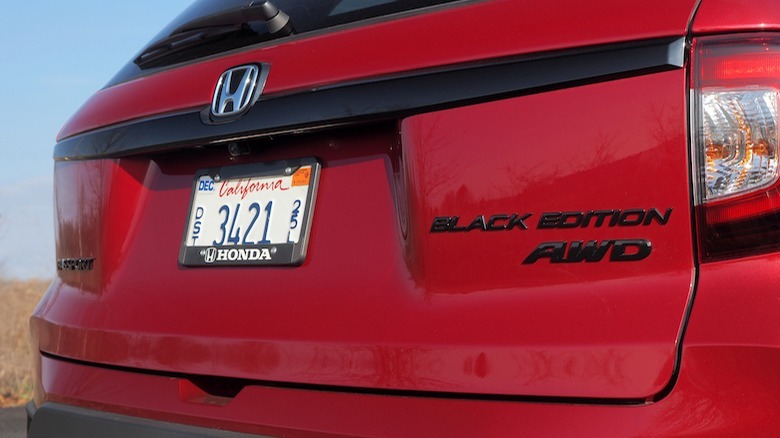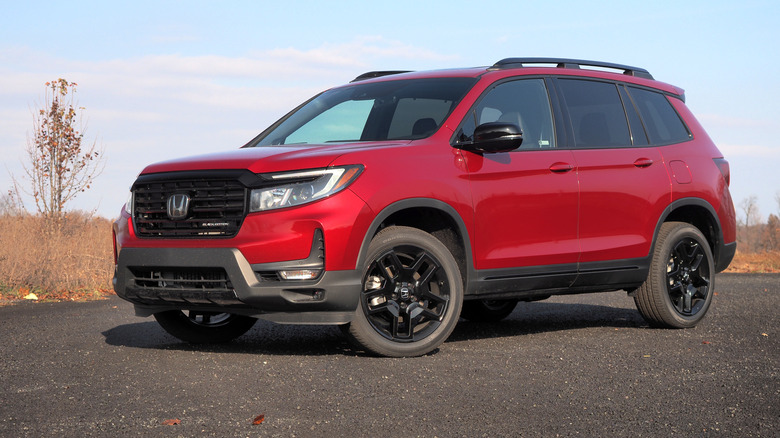2024 Honda Passport Review: Two-Row SUV Skips The Gimmicks
- Standard AWD and V6 are smooth and reassuring
- Solid standard active safety tech package
- Focused cabin updates improve storage
- Infotainment screen is small compared to rivals
- No electrification means economy is merely okay
- Solid and dependable, but not exactly exciting
SUV buyers are an uncompromising bunch, with arguably higher expectations for the flexibility and practicality of their vehicles than even supercar owners: at least they generally just want to go fast in a straight line, and not go skidding out in the first corner. For a two-row SUV like the 2024 Honda Passport to fulfill its remit, in contrast, it has to possess style but not sacrifice functionality; deliver on- and off-road capability, even if the latter is seldom used; and have all the technology and active safety features a modern family expects, but without requiring a PhD to use it.
Unsurprising, then, that the two-row SUV category is fierce. Honda's current Passport sales — which amounted to around 40,000 cars so far this year, as of November 2023 — are dwarfed by the alternatives from Ford and others. Rivals can compete on unexpectedly potent performance, head-turning design, clever practicality, or a gadgetry-filled cabin, or some combination of all four.
Meanwhile, Honda's focus for the 2024 Passport has been off-road capability and interior versatility, though this new SUV definitely feels like a refinement, not a reinvention.
Three trims, two areas of focus
The Passport remains handsome, though not especially memorable, particularly given the aesthetic overlap between this, Honda's bigger Pilot, and the Ridgeline pickup truck. Rugged practicality has taken priority, with roof rails and plenty of sturdy plastic cladding.
As in the last model year, there are three trims for the 2024 Passport, though the flagship has changed. The 2024 Passport EX-L now starts at $41,900 (plus $1,375 destination), an $800 increase over the outgoing version; in the middle is the 2024 Passport TrailSport, now with all-terrain tires on 18-inch wheels and off-road-tuned suspension (though no increase in the standard 8.1-inches of ground clearance all Passport trims share, or the SUV's approach/departure angles). It starts at $44,500 (plus destination), a $900 increase versus last year.
Replacing the old Elite trim is the new 2024 Passport Black Edition. It starts at $47,970 (plus destination), a $1,410 increase over the Elite, and builds on the higher equipment levels with a fresh exterior styling package. Along with 20-inch black-painted alloy wheels, the grille, headlamp trim, door handles, and other exterior parts are finished in black rather than silver.
A single engine with AWD as standard
The 2024 Passport offers only one engine option, a 3.5-liter V6 with 280 horsepower and 262 lb-ft of torque. It's paired with a 9-speed automatic transmission and all-wheel drive as standard, the latter using Honda's i-VTM4 torque vectoring system. In addition to pushing up to 70% of engine torque to the rear, it can direct up to 100% of that torque to either the left or right rear wheel, depending on factors like cornering aggressiveness and traction.
If that sounds familiar, it's because Honda offered the same features on the outgoing Passport. The Intelligent Traction System — with its Sand, Snow, Mud, and Paved Roads settings — is carried over, too, along with an Eco mode and a Sport setting for the transmission. With its rubber upgrade, the TrailSport may have gained a little extra sure-footedness, though it's tough to imagine many Passport owners actually venturing too far off-road to test the SUV's limits.
Far more likely is taking advantage of the 5,000 pounds of tow capacity, or frankly just enjoying how the Passport feels smaller than it is from behind the wheel. At 189 inches long it's not exactly a tiny SUV — though it's almost a foot shorter than the three-row Honda Pilot — but the agile handling and direct steering feel add up to an unexpectedly engaging drive.
Okay fuel economy, but no hybrid hurts
As for fuel economy, those numbers are unchanged from last year, too: 19 mpg in the city, 24 mpg on the highway, and 21 mpg combined. In my own, mixed driving I saw just over 20 mpg, and when it comes to filling up, the Passport is fine with regular unleaded rather than demanding premium gas.
Sadly, Honda hasn't seen fit to apply its capable mild-hybrid system to the Passport yet — currently, the biggest model to get that is the CR-V Hybrid — though the fast-approaching 2024 Prologue will be a fully-electric alternative. The EV SUV has about the same footprint as the Passport but has a significantly longer wheelbase for a cabin that feels more spacious, particularly in the second row. The Prologue also avoids the odd little floor lip that the Passport has just inside the rear doors.
The electric SUV will also be more expensive — upper $40,000s, before credits and incentives, Honda says, and you'll need to spend even more if you want all-wheel drive — compared to the Passport. The gas SUV has a significantly larger trunk, too.
A sturdy, sober cabin
Like the old Elite trim, the Black Edition gets leather upholstery, heated and ventilated front seats, heated rear seats, and a heated steering wheel. Gone is the old gray leather — relegated to the EX-L — replaced by black with red contrast stitching (and matching stitching on the wheel and door panels); the single-color ambient lighting is red, too. The result is definitely on the dark and moody side, and the moonroof (standard on all trims) doesn't brighten things like competitors' full panoramic glass might.
Compared to the tech-forward interiors of many of the Passport's rivals, Honda's restraint is either old-school or charmingly practical, depending on your tastes. Certainly, the profusion of physical switches and buttons — all of which feel sturdy and reliable — and an actual volume knob makes it easy to reach out and adjust temperature and media without needing to dig through a touchscreen. It probably won't win any style awards, but then that's hardly the goal.
There are two USB ports in the front — one each of USB-C and USB-A — along with a 12V outlet and a wireless phone charging pad. The rear gets two USB-C charging ports and, on the Black Edition, a useful 150W AC outlet. That top-tier trim also gets rear seat controls for the HVAC; passengers in lesser trims will have to ask those up-front to adjust the standard three-zone climate control on their behalf.
Some careful tweaks to bump up practicality
Those in the front find their seats divided by a revamped center console which is significantly larger than the old version with its sliding lid. Now, a broad armrest lifts to reveal a capacious bin that Honda says can hold a tablet, while though there's still only one wireless charging pad at the base of the center stack, a redesign means a second phone can sit alongside it too. Trunk space goes unchanged, at 41.2 cu-ft expanding to 77.7 cu-ft (or 77.5 cu-ft on the Black Edition) with the rear seats folded.
Sadly, Honda's updates to the Passport's dashboard don't extend to a new infotainment system. It's the same, 8-inch touchscreen as on the previous Passport — which looks small compared to what rivals are putting in their SUVs — and while Apple CarPlay and Android Auto remain standard, they're still wired, not wireless. Wi-Fi hotspot support is still only offered on the flagship Passport trim.
At least Honda's active safety suite is standard across the board. Honda Sensing includes collision mitigation braking, road departure mitigation, lane-keeping assist and lane-departure warnings, forward collision warnings, front and rear parking sensors, and blind-spot warnings with cross-traffic alerts. Adaptive cruise control is also standard, but weirdly no 2024 Passport trim offers a 360-degree camera, even as an option. Nor is there the convenience of auto brake-hold.
2024 Honda Passport Verdict
In the grand scheme of two-row family SUVs, the 2024 Passport plays things safe. No love-it-or-hate-it styling, no avant-garde cabin, and not a sniff of electrification: it's the sort of play that you can only really make if you're deeply confident in your product and your audience. While it might've been nice to see this revamped SUV really double down on its changes, for the most part, Honda has succeeded.
The V6 is smooth and easy to live with, the standard all-wheel drive lends four-season confidence and contributes to that healthy tow rating, and the cabin — while still lacking some features — feels more than capable of withstanding kids, pets, and outdoor lifestyles. In short, it's a great example of what a decent family SUV looks like today, even if it doesn't even attempt to embrace the features and technology of a fast-approaching tomorrow. For that, we'll have to be just a little more patient for the Honda Prologue.
